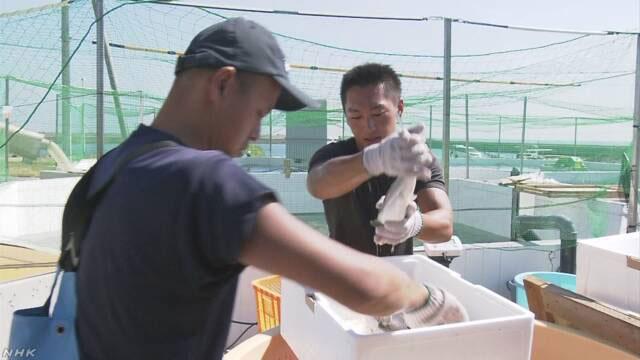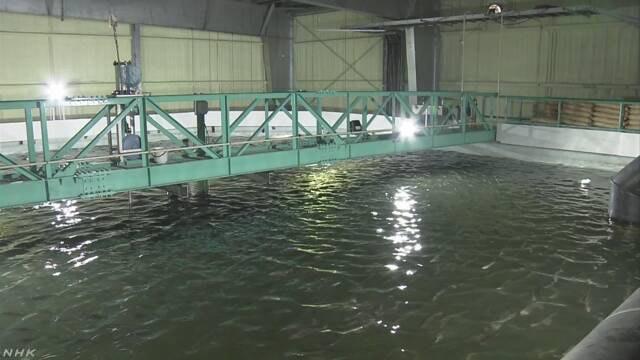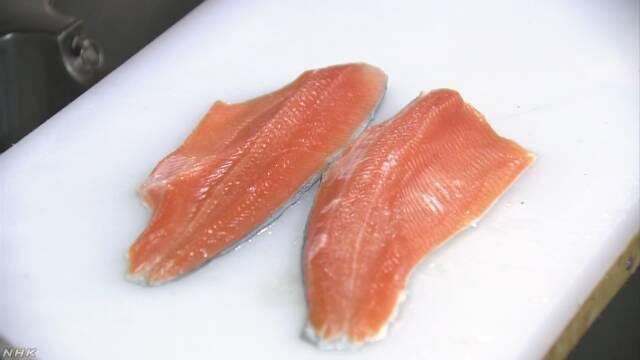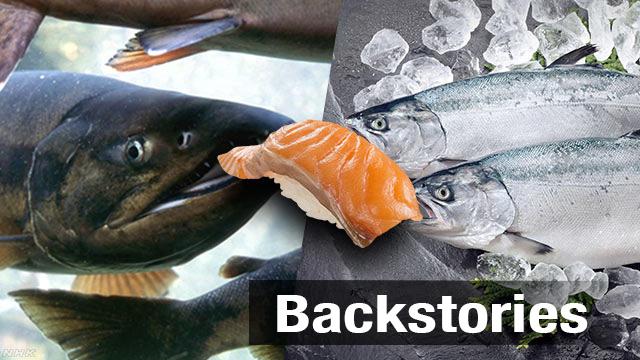Salmon is popular but most of it comes from overseas
According to a survey by Maruha Nichiro, a leading marine product company, Salmon has been the top seller at conveyer-belt sushi restaurants for 7 years running. Research by Hokkaido National Fisheries Research Institute shows that annual salmon consumption in Japan grew from 310,000 tons in 1988 to 420,000 tons in 2013. More than 70 percent of salmon that can be eaten raw is cultured in countries like Chile and Norway and imported to Japan.

Salmon farming is growing in Japan
To capitalize on salmon's popularity, efforts to culture the fish are starting in various parts of Japan. In August, Kotoura Town in Tottori Prefecture started shipping silver salmon grown at an onshore facility. The prefecture and the town together invited a fish farming company from Fukushima in 2016. The company suffered damage in the Great East Japan Earthquake in 2011 and had been searching for a new site to continue business. To support the company, the prefecture and town even provided subsidies worth 2.3 million dollars, which partially covered facility construction costs of about 11.5 million dollars.
The president of the farming company, Gakuto Hagiwara, recalled, "The officials told me, 'Let's work together to make Tottori the number one salmon producer in Japan.' That made me happy, because I felt we shared the same ambition. I'm determined to achieve the goal.”

Securing food safety with onshore farming
The company grows salmon in indoor facilities from eggs to fully-grown fish, which is rare in Japan.
According to Hagiwara, farming fish indoors can reduce the risk of the fish catching disease, enabling them to grow silver salmon that can be eaten raw. He says the company uses groundwater from near the site, which contributes to the fish's light flavor.
Also, with the introduction of its original technology to filter fish droppings and uneaten food, the company has reduced the amount of water used for farming to just one percent of the normal onshore method.
Since Tottori Prefecture faces the Sea of Japan which is known for raging waves in winter, it is hard to secure a suitable offshore location. If onshore farming gets on the right track, salmon can be shipped out steadily even during the winter. The prefecture and the town expect the business will contribute to the development of the prefecture's fish farming industry in the future.

The authorities are promoting the silver salmon with the brand name, "Tottori Kotoura Gran Salmon." "Gran" is associated with groundwater or grand. Shipping to the Kansai and Kanto regions have already begun. The company is aiming for an annual production of 600 tons.
Hagiwara says, "At this moment, we are providing the fish at reasonable prices to have consumers discover the taste of our salmon, but our goal is to enhance the product's added values, such as freshness and safety, and establish a brand chosen by high-end restaurants."
More than 50 local salmon brands
Professor Masaaki Sano at Kagoshima University, who studies salmon culture, says efforts to develop local brands of salmon were mainly seen in the Tohoku region in the past, but they spread to other areas after the 2011 earthquake and tsunami in northeastern Japan.
The tsunami caused devastating damage to salmon farms in Miyagi Prefecture, but facilities for breeding salmon fry in Yamagata and Iwate Prefectures were not affected.
Sano says when fry breeders in those prefectures were looking for new customers, people in prefectures where salmon had previously not been grown, such as Kagawa and Tottori, stepped up.

Locally farmed salmon is being developed one after another. Ehime Prefecture's Uwajima salmon is grown with feed that includes oil extracted from Iyo tangor peel, so that the fish has the flavor of fresh mandarin. Salmon named Kinuhime, or silk princess, is grown in clear streams in the Okumikawa district in Aichi Prefecture and has a beautiful shape. Shinshu salmon in Nagano Prefecture is said to have a light taste as its feed contains no fat.
Sano says, "Cultured salmon is good for eating raw and capable of meeting the country's robust demand. Raw salmon is particularly popular among younger generations, so salmon cultivation is likely to spread further on condition that those people will continue to eat the fish raw when they grow older."
Salmon could revitalize rural economies
There is said to be more than 50 brands of local salmon in Japan. As Japan's population ages and shrinks, salmon unique to each region is drawing attention as a possible solution to revitalize rural economies.

